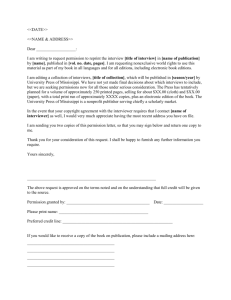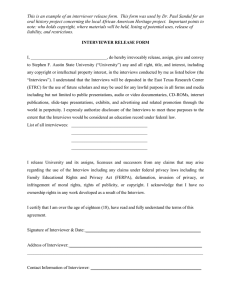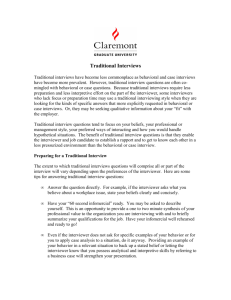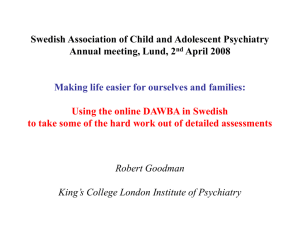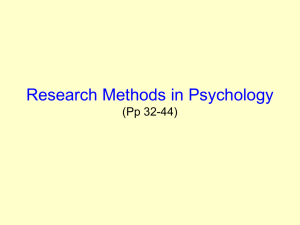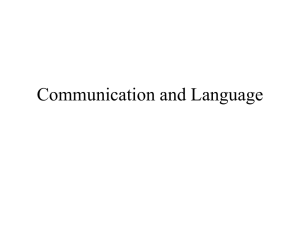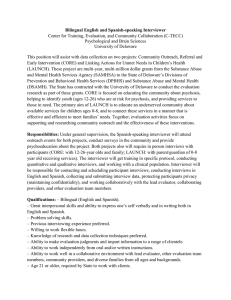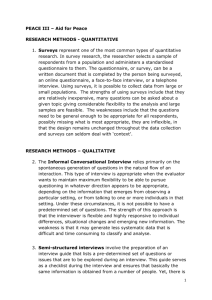Case-Interviews-BWIB-Veronica
advertisement
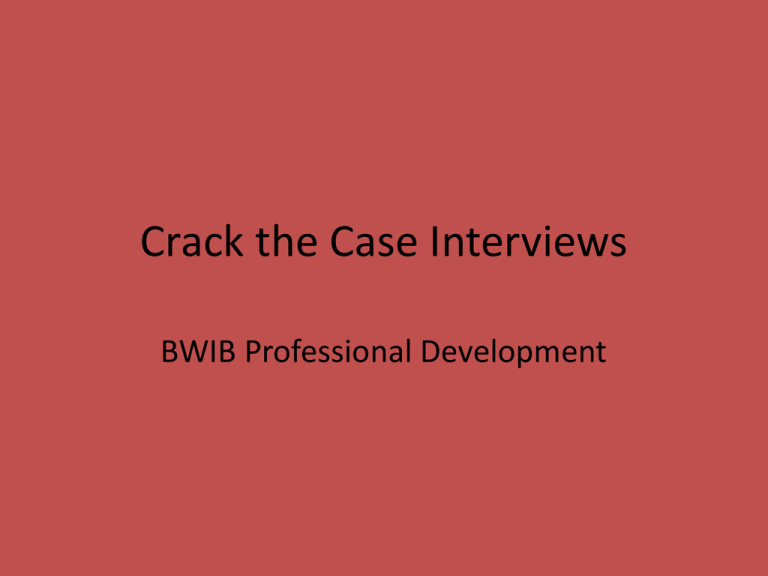
Crack the Case Interviews BWIB Professional Development Overview • • • • • Purpose of Case Interviews Types of Cases Tips Basic Concepts and Frameworks Samples Purpose of Case Interviews • What’s a Case? – A Case interview is the analysis of a business question. • Most of the interviews don’t have a specific answer that you are expected to give. What the interviewer is looking for is a thought process that is both analytical and creative. • You are expected to show them how logical, analytical, and creative in your way of dealing with questions. Purpose of Case Interviews • What firms are looking for? Types of Cases • Brain Teasers or Guesstimates • Business Cases Types of Cases • Brain Teasers or Guesstimates – “What is the size of the skateboard market in the U.S?” – “How many watermelons are sold in the U.S each year?” • Responses should demonstrate – Comfort with ambiguity – Ability to structure – Facility with numbers – Poise Types of Cases • Business Cases – Falling Profits Case: Ask you for the reason in dropping profits. – New Product Introduction: Ask you to recommend a strategy for introducing a new product. – Entering a new market: Ask you to analyze whether a company should enter a new market or develop a new line of products or services. – Entering a new geographic market: Ask you to analyze whether a company should expand into a new country or region. – Mergers and Acquisitions: Ask you to determine whether a particular acquisition would be advisable. Business Cases Cont. – Competitive response case: Ask you to recommend how your client should react to a move by its competitor. – Change in government/regulatory environment • Responses should demonstrate – Big picture perspective – Ability to structure – Broad functional skills – Comfort with details, analysis Tips • Take notes – The cases might be given in oral or written form. If it’s given in oral form, you should definitely take notes. This means that you should bring your own notepads and pens to the interview, sometimes, it’s even god to bring some graphing paper. • Make no assumptions – When you have a question, definitely ask them! Don’t make assumptions that the interviewers do not explicitly say. Also, remember that “not asking questions is a fatal error in a case interview!” • Listen to the answers you get – Always remember not to get caught up in asking the perfect questions and don’t listen to the answers you receive. Make sure you respond to the information you receive and incorporate it into your analysis. Tips Cont. • Maintain eye contact – Eye contact demonstrates confidence and authority. • Take your time – It’s perfectly fine to take your time to think through your answers, but remember to keep it short. You don’t want your interviewer to wait for 5 minutes, when the case itself is only 15-20 minutes. • Lay out a road map for your interviewer and THINK OUT LOUD! • Quickly summarize your conclusions – Think of it as doing a “60 second elevator pitch.” If you are not comfortable with it, make sure your practice at home. Tips Cont. • Present your thinking in a clear, logical manner. Where useful, use frameworks and business concepts to organize your answer: – In general, you will want to follow the following steps; use certain business concepts when useful. • • • • Understand the scope of the engagement Pinpoint the objectives Identify the key players Work towards a recommendation DON’TS!!!! • Forget to conclude the case – regardless of progress made or rime constraints • Waffle or be indecisive • Forget the original question • Overly worry about basic math mistakes • Get lost in the details • Lose eye contact with your interviewer • Keep your though processes to yourself Statistics You SHOULD Know Basic Frameworks • Five Stages of a Business Case Scenario – Confirm your understanding of Scenario (5%) – Ask questions to obtain additional information (10%) – Develop your hypothesis and framework (10%) – Work through the case (65%) – Summarize and pull up (10%) Basic Concepts For Starters • Cost-benefit analysis – Another way of saying “weigh the pros and cons” of a decision before making a recommendation. • Internal vs. external market factors – Used most often why the case is about dropping profits. • Fixed vs. variable costs – When making decisions in the short run, only variable costs should be considered since the company can’t change its fixed costs in the short run. (Note: In the long run, nearly all costs are variable, even things like rent. For example, over the long run, the firm can move to smaller offices, or even to another state or country with lower operating costs.) • Opportunity cost: – When analyzing a possible decision in a case interview, try to examine all possible opportunity costs that the subject of the case might incur by making or not making a particular decision. Framework Examples: The “Three Cs” Framework Examples: The “Four Ps” Five Forces Market Analysis Sample Guesstimate • How many balls can fit into a Boeing 747? Calculate Volume of a Golf Ball Calculate Volume of 747 Calculate the Answer Case Example
